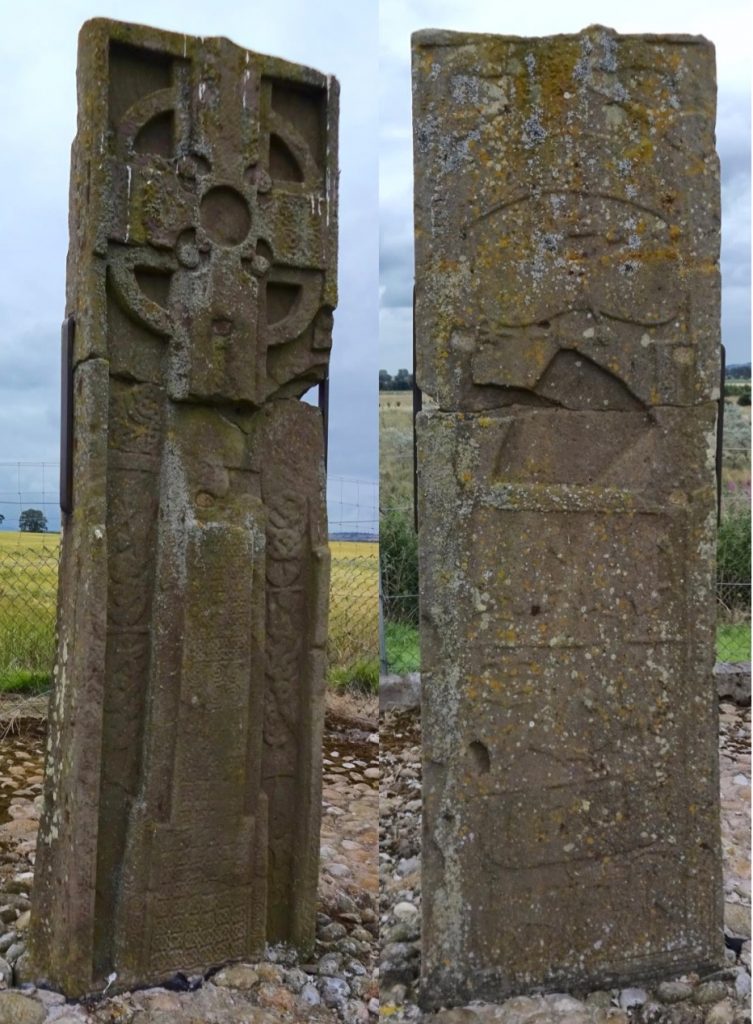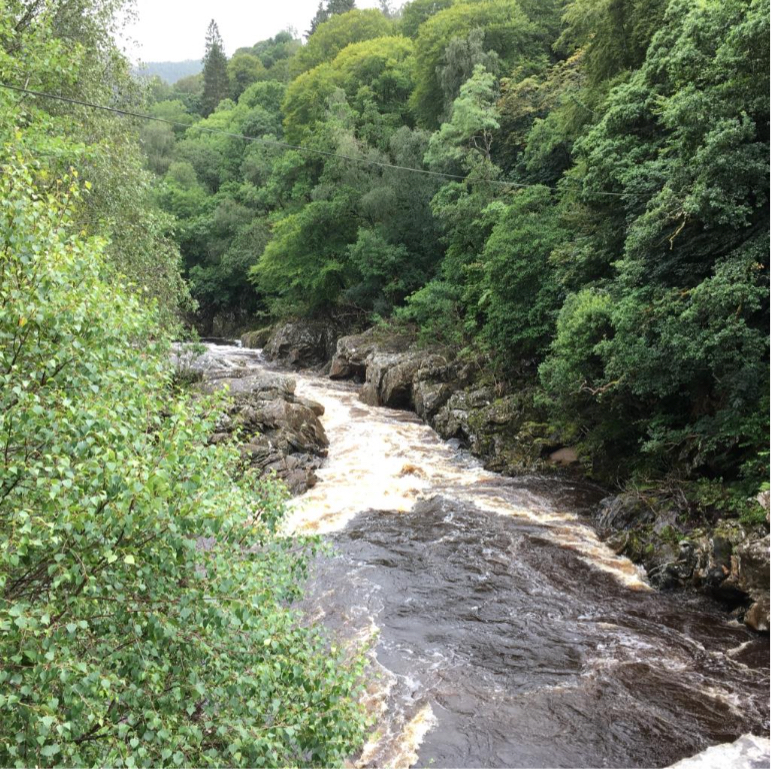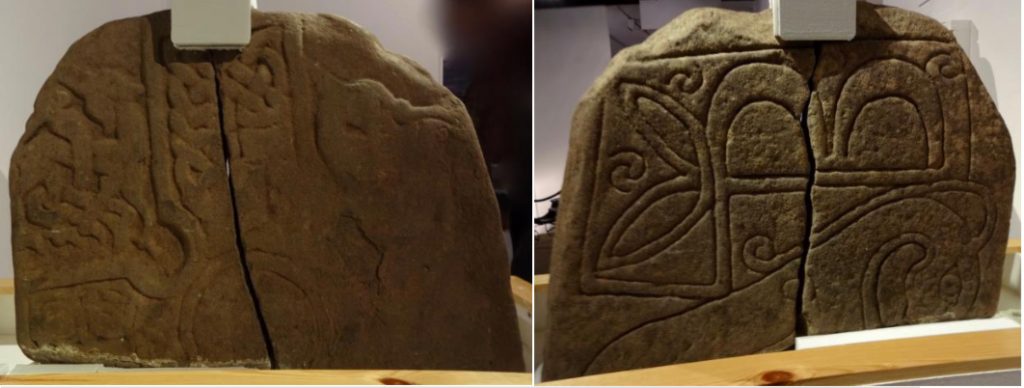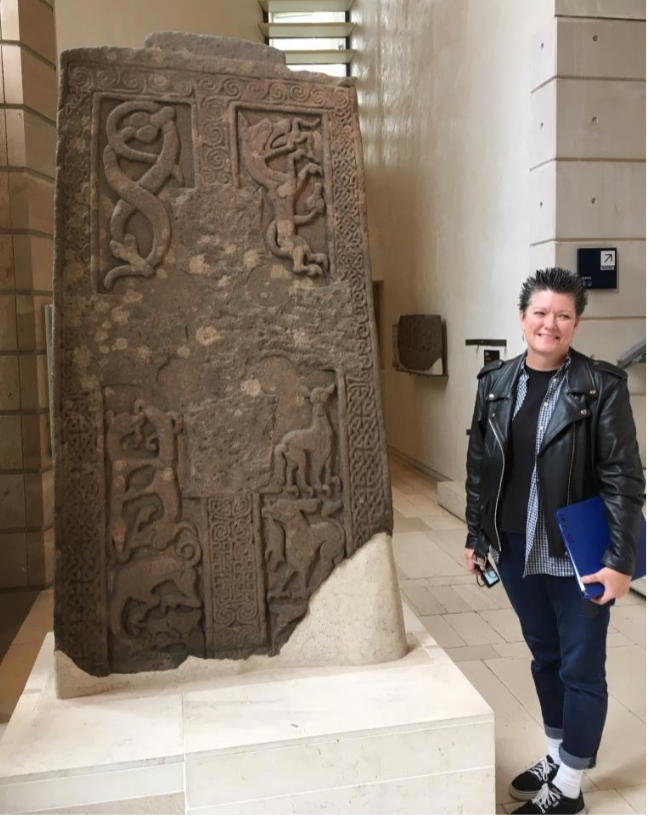Sandy Tomney is an art history graduate student completing her qualifying paper research on the Pictish Stones found within Scotland. She was awarded the Art History Department Graduate Research Grant to help make this project possible.
Hundreds of carved stones and stone fragments have been found within Scotland’s landscape. Many of these sculptures are attributed to the peoples known as the Picts who lived in northern Britain during the early historic period. Art historians and archeologists have been studying these monuments for several hundred years and are still working towards better understanding Pictish art and society. Recently, on a trip to Scotland, I had the opportunity to examine some of the monuments and their find sites first hand.
Due to the large number of Pictish stones that have been found, I decided to use iconographical similarities to limit my investigation of the stones. The ten monuments that were to be examined are carved with quadrupeds that have clawed feet, long legs, long tails, long duck-like noses, large eyes, and profiled bodies. It just so happened that each of these monuments was originally found near Scotland’s east coast. Each was discovered south of the Cairngorms and slightly inland from the coastline among agricultural land. With the exception of the Forteviot Church Stone, each of the other monuments was originally found north of the River Tay.

Example of quadrupeds with clawed feet, long legs, long tails, long duck-like noses, large eyes, and profiled bodies found on Meigle No. 4. (Photo by author, 2016)

Aberlemno No. 2 still stands in the local kirkyard. During the winter months it is covered with a protective box. (Photos by author, 2016)
The monuments have similar iconography, but visiting their find sites revealed a topographical connection between the stones as well. Seven of the find sites visited were near rolling fields of barley and other grains. This landscape differs greatly from the more mountainous regions to the west and north. The eighth and most northerly Dunfallandy Stone’s find spot was near Killiecrankie along the floodplain of the River Gary. The River Gary cuts through the southwestern tip of Cairngorm National Park. Although the area’s landscape is in transition from rolling hills to mountains, similar to the other find spots, much of the land is dedicated to agriculture. Of the stones that were visited, only St. Orland’s Stone found in a field near Forfar and the Aberlemno stones situated along the local road and in the local kirkyard potentially remain in their original find spots. Most of the monuments have been moved into museums or churches to avoid further deterioration that may be caused by the elements.
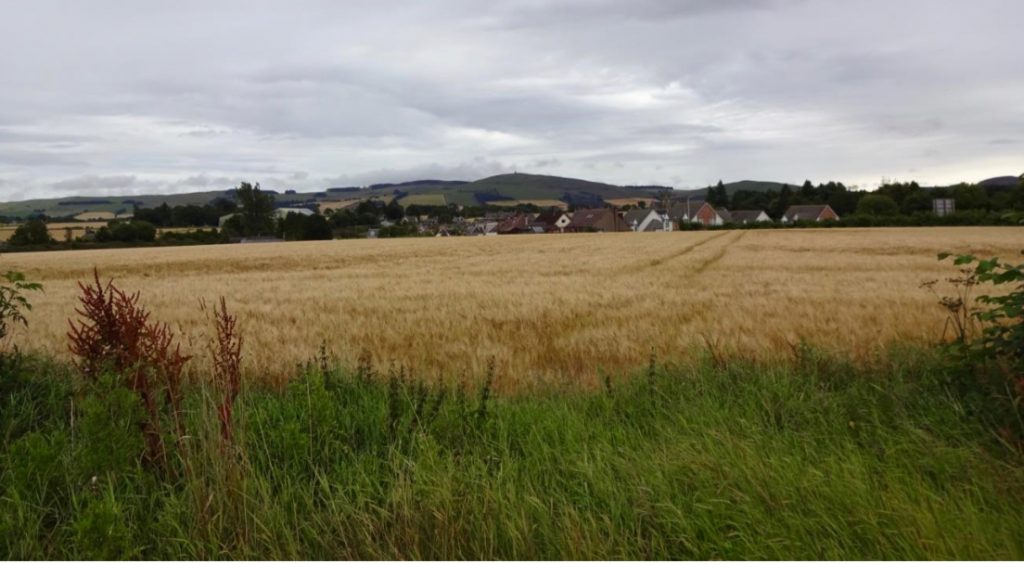
The village of Meigle is surrounded by productive agricultural land such as this barley field. (Photo by author, 2016)
Visiting the small museums not only allowed me to view the stones in the study, but also provided a chance to see other Pictish stones. Seeing Strathmartine No. 3 on display at The Meffan Museum and Gallery in Forfar allowed me to better discern details on the stone that photographs just could not capture. In addition to Strathmartine No. 3, the museum was exhibiting the stones found nearby at Kirriemuir. About twelve miles from Forfar is the Meigle collection of twenty-six monuments that is housed in an old school house. The Meigle Museum had on exhibit three of the monuments that were on the list of those to see. Viewing the monuments allowed for a better understanding of the scale of the stones and how they might function within their original cultural landscape. Although their collections did not include any of the monuments on my list, I also visited the St. Vigeans Stones and Museum as well as the Museum of Perth. Both museums are located within the region and the monuments they exhibit may be useful as comparisons.
Originally found just outside of Aberlemno, the Woodrae Castle Stone was one of the stones on the list that was a “must see.” It is now on display at the National Museum of Scotland, and a trip to the Edinburgh museum provided an opportunity to personally observe the details on the amazing stone. The museum trip also permitted me to view an array of other Pictish stones, as well as, Celts a major joint exhibition between the National Museums of Britain and Scotland. Although the museum in the busy city felt like another world after exploring the country side, it was well worth the detour.
Overall the trip allowed me to visit the find sites of all ten monuments and actually see eight of the ten stones. In addition, it was helpful to see other Pictish stones that did not have the same iconography as those in the study. The field information that was collected was helpful and greatly added to the research I am currently conducting.
